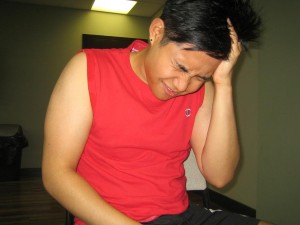Chicken pox is caused by the varicella-zoster virus which is prevalent among children. Generally, the symptoms of the condition can cause discomfort for toddlers since they could not describe what they feel.
As the disease runs its course, it is vital to be able to monitor the distinctive signs of the infection.
Common signs of chicken pox among toddlers
Headache and fever
An individual with chicken pox might suffer from a headache, fever and generalized feeling of being sick 11-15 days after being exposed to the virus and the initial signs arise 24-36 hours before the lesions arise.
It is vital to be alert if a toddler is attempting to voice out that he/she has a headache or stomachache. The child might also experience a sore throat or seems to have the cold with evident signs such as sneezing, coughing or runny nose. Appetite loss might also occur at this phase or later.

Rashes
The initial sign of chicken pox is a reddened, itchy rash that can be complemented by momentarily flushed skin. The rash typically starts on the face and trunk before spreading all over the body.
The natural reaction of the toddler is to scratch the affected sites. It is recommended to use a cold compress or frequent lukewarm baths to alleviate the itchiness.
Papules
The rash triggered by chicken pox develops rapidly into elevated bumps or papules. This typically occurs within hours after the initial manifestation of the rash.
The child should be instructed to avoid scratching since this can break them open and increase the risk for infection. It is recommended to put mittens on the hands of the child when he/she goes to sleep.
Blisters
The papules later form into the distinctive blisters or vesicles. These blisters manifest in consecutive outbreaks with a new succession that arises as the others become crusted and start to develop scabs.
In case the child has mouth blisters, acetaminophen can be given to lessen the discomfort. If the blisters form in the genital region, the doctor might suggest a pain-relief ointment.
The papules generally stop forming after 5-6 days. Once day 14 is reached, most of the blisters have formed scabs and the contagious phase of the disease has ended.
